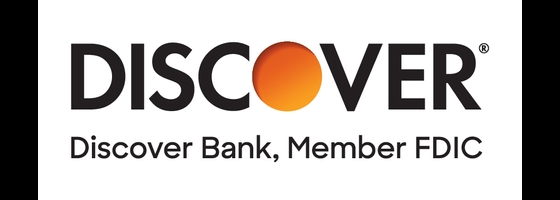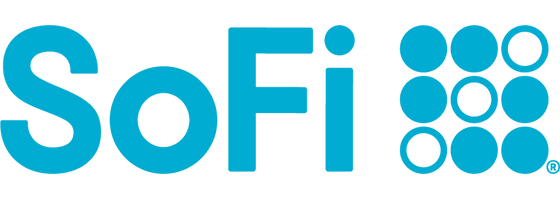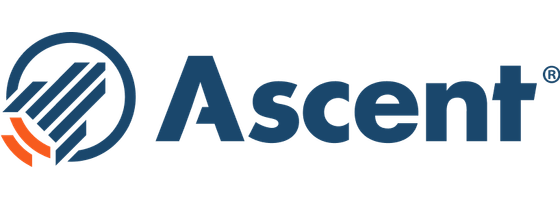- No fees.
- Covers up to 100% of the amount of your school costs.
- Cash rewards for good grades.
Best Private Student Loans in February 2025

Our evaluations and opinions are not influenced by our advertising relationships, but we may earn a commission from our partners’ links. This content is created by TIME Stamped, under TIME’s direction and produced in accordance with TIME’s editorial guidelines and overseen by TIME’s editorial staff. Learn more about it.
Do you know the difference between a federal student loan and a private student loan? If you’re considering borrowing money for college, it’s important to understand how both work.
Federal student loans are issued by the federal government. They are easier to get than private student loans, come with various financial-hardship benefits, and can potentially be forgiven. Private student loans work differently and are generally more suitable in the following situations:
Private loans can also offer lower interest rates for borrowers with excellent credit. Here is our list of the best private student loans for 2024. The figures are for undergraduate loans without a cosigner. APRs for loans taken out with a cosigner may be lower.
| Lender | Recommended for | APR* | Loan Amount | Credit score required |
|---|---|---|---|---|
Discover | Minimal fees | 5.24% to 15.99% fixed; 6.49% to 17.37% variable | Up to 100% of school costs | Undisclosed |
Earnest | Fair credit | 4.36% to 16.15% fixed; 5.87% to 18.51% variable | Up to $57,500 | 650 |
Sallie Mae | Part-time students | 3.69% to 15.49% fixed; 5.54% to 15.70% variable | Up to 100% of attendance cost | Undisclosed |
Laurel Road | Refinancing with linked checking | 4.92% to 9.75% fixed; 4.97% to 9.95% variable | Up to $100% of the loan amount | Undisclosed |
SoFi | Payment perks | 4.44% to 14.70% fixed; 5.99% to 14.70% variable | Up to 100% of total education cost | Mid-600s |
Ascent | International students | 9.16% to 15.11% fixed; 9.27% to 15.20% variable | Up to $200,000 | Undisclosed |
RISLA | Financial hardship accommodations | 4.05% to 8.64% fixed | Up to $50,000 per academic year | Undisclosed |
College Ave | Varying term lengths | 3.87% to 17.99% fixed; 5.59% to 14.49% variable | Up to 100% of attendance cost | Mid-600s |
Splash Financial | Finding refinancing | 5.09% to 9.99% fixed; 5.28% to 9.99% variable | Up to 100% of the loan amount | 660 (for a good interest rate) |
*APRs as of May 13, 2024.
Discover is one of the most well-known lenders in the country, and it brings one of its biggest competitive advantages—no fees—to student loans. With Discover you won’t pay any up-front fees. You also won’t pay late fees if you get behind on a payment, and you won’t be subject to prepayment fees if you manage to pay off your loan early. Discover also offers repayment assistance options with a temporary postponement of monthly minimum payments for various reasons.
Discover offers a 1% cash bonus to those with at least a 3.0 GPA or equivalent. For example, if your loan is $40,000, you’ll get $400 to take home.
Unfortunately, as of Feb. 1, 2024, Discover has stopped accepting applications for student loans. How long this situation will last is unclear.
Earnest is one of the few lenders that discloses the exact FICO credit score you’ll need to qualify for a loan, 650, which is defined by FICO as “fair.” Most Americans score higher than that, but many undergraduates entering adulthood do not. While other factors are also at play, if you’ve got a score below that magic number, you’ll need a cosigner.
Earnest provides a 0.25% APR discount when you enroll in autopay. Given that it already offers some of the lowest interest rates on the market, you can achieve an APR as low as 4.11%, though you’ll need excellent credit to qualify for a rate that low.
Many student loan providers have stipulations surrounding your attendance. For example, you may be required to attend school full time. More lenient lenders will be okay with half-time attendance, but Sallie Mae will extend you a loan for less than that, which is uncommon.
That said, Sallie Mae limits how less-than-half-time students can use their student loan money. For example, you can’t spend it on miscellaneous personal expenses, such as a laptop or groceries.
Laurel Road offers student loan refinancing and incentivizes you to link one of its checking accounts to get meaningful discounts on interest rates.
Without linking a checking account, Laurel Road’s student loan APRs fall between 5.44% and 9.95%. However, if you do link your account, you’ll be eligible for the following:
Even if you’re not interested in opening another checking account, Laurel Road is worth a look, considering its APR ceiling is below average. There are lower APRs out there (as you’ll see), but this is one of the lowest.
SoFi doesn’t just lend you money; it offers perks that can set you on the path to success in life. A SoFi member can access the following benefits:
Another noteworthy benefit that you won’t find with many competitors is lenient cosigner release terms. Many lenders won’t allow you to remove a cosigner from your loan until most or all of your debt has been paid. However, SoFi offers a cosigner release after 24 months.
Unlike many financial institutions, Ascent will lend to international students as long as they have eligible resident status and do not have Deferred Action for Childhood Arrival (DACA) status.
To qualify, the student must have a cosigner who is a U.S. citizen or permanent resident. The cosigner must have strong creditworthiness, a gross annual income of at least $24,000 for the current and previous year, and be able to provide satisfactory proof of income.
You shouldn’t enter into a loan with the expectation of not being able to pay it back. However, choosing a private student loan with financial hardship benefits isn’t a bad idea. RISLA does a good job on this front by offering a handful of features designed to assist those facing financial hardship.
For example, its income-based repayment (IBR) feature adjusts your monthly student loan payment based on how much you earn and the size of your family. If you’re not making much, your payment is reduced. You’ll often find this option with federal loans, but not private ones.
It also offers 25-year forgiveness, meaning you’ll have to pay down your loan for a maximum of 25 years. Of course, if your income improves, more money will go toward repaying the loan.
Undergraduate Fixed 3.47%-17.99% APR Variable 4.69%-17.99% APR
Graduate Fixed 3.47%-14.49% APR Variable 4.69%-14.49% APR
Student loans tend to come in term packages of five-year increments. Most people find that workable; still, having more options is always better.
College Ave offers repayment plans of five, eight, 10, and 15 years. You can also receive a term length of up to 20 years, depending on the loan type. Generally, the shorter your repayment term, the lower your APR will be. The eight-year term caters to borrowers who can’t afford the monthly payments of a five-year term but don’t want the much higher interest rates of a 10-year term.
Splash Financial focuses on refinancing existing student loans. It’s different from other financial institutions on our list in that it’s not itself a lender. Instead, it’s an aggregator for many lenders.
Splash Financial uses your personal information, including your income details, to locate a loan that fits your situation. It will present rates and a payment plan for you to consider before you formally submit an application.
When ranking the best private student loans, we weighed factors such as the APR, repayment terms, ancillary fees, and discounts. Only the lenders (or marketplaces) with the most customer-friendly policies made our list.
APR is the interest you’ll pay on your student loan. You’re often given two choices:
Lenders offer a wide range of interest rates, so try to choose from among the ones that offer the lowest APRs. It could save you many thousands of dollars in the long run.
Some lenders will extend the full amount of your tuition, while others enforce a firm cap. Be sure to get a loan that covers your entire borrowing needs. Otherwise, you could find yourself dipping into your savings or taking on additional debt.
It’s vitally important to find a repayment plan that fits your budget. Even if a lender is willing to give you the money you need, a shorter repayment term may make your monthly payments unaffordable. It’s not a bad idea to secure the longest term you can and then pay off your loan as fast as you’re able (provided there are no prepayment penalties).
Some lenders provide APR discounts based on activity such as enrolling in autopay or electing to have the loan funds deposited directly to the educational institution. Taking advantage of features such as these can really add up.
Many lenders allow you to prequalify for offers before you submit a formal application. This gives you a ballpark idea of the type of interest, loan amount, and terms you may be offered. You can use this information to find the best possible offer.
Lenders will have varying approval conditions depending on your enrollment status. Some may require you to be registered full time or at least as a half-time student. Others allow you to borrow even if you’re registered for less than that.
Always check your credit score before applying for a student loan. You don’t want to submit a loan application if you have no chance of qualifying.
Some lenders are transparent about the minimum credit score you’ll need to be approved, but many are not. Generally speaking, if your credit score is in the low 600s or below, you’ll have a tough time getting approved without a cosigner.
Lenders want to know that you’re able to make the monthly payments on a new loan. They’ll assess your annual income in relation to your current debt and monthly obligations. Some will have stringent requirements.
If for some reason you don’t qualify for a student loan, you may want to consider a personal loan. You can usually use the money for any purpose, though some stipulate that it can’t be used for higher education, and you won’t have to worry about requirements such as a minimum enrollment period.
Those with a poor credit history can consider a secured loan, which requires you to provide collateral (such as your car) up front. This minimizes the bank’s risk, as it can sell your security if you default on your loan.
Personal loan interest rates may be higher than private ones, and you may end up with a shorter term. Still, a private loan is a reasonable fallback.
Tuition installment plans, such as this one for New York University, give you the opportunity to pay cash for your schooling without needing to have the money up front. You’ll be charged monthly but won’t incur interest, so you’ll pay less than if you had opened a student loan. There’s usually a modest enrollment fee to begin a payment plan.
The drawback is that you must often pay the entire cost by the academic period’s end date. In other words, you’ll have considerably less time to pay your bill than with a private student loan.
If you can’t afford to keep going, there’s no shame in taking a year off of school. Work to make the money you need and get back in the classroom as soon as possible.
Student loans allow you to borrow money to pay for higher education. You can use the money for expenses such as tuition, school supplies (including a laptop), room and board, and some living expenses. You’ll be put on a repayment plan by the lender from which you’ve borrowed the money.
Student loans exist to help you finance your education. Remember, however, that it’s a business, not a philanthropic endeavor, so there are drawbacks. Weigh your options carefully.
You can apply for a student loan online or over the phone with most lenders. You’ll need to provide information such as proof of identity and citizenship, tuition costs, information about your school, and more.
The lender will also want to know your credit score, debt-to-income ratio, and income. If you’re using a cosigner, they will have to provide the same information.
It’s possible to get a private student loan without a cosigner if you have a good credit score. A cosigner is only required when you don’t have sufficient creditworthiness to be approved on your own or if you have no credit history.
A federal student loan should be your first option, ahead of taking out a private loan. If you qualify, you can apply for one by submitting the Free Application for Federal Student Aid (FAFSA). Keep in mind that borrowing amounts will vary. Also, there is no credit score requirement, except for PLUS loans.
To date the Biden administration has approved $146 billion in student debt relief for four million Americans, and it hopes to help tens of millions more with a new forgiveness plan announced on April 8. These include:
The hard truth is that there is $1.7 trillion in outstanding student loan debt in the U.S. in 2024 (further illustrating the risk involved with borrowing many thousands of dollars for schooling). There are more student loan forgiveness plans on the way for specific demographics such as these. Read our article on how to apply for student loan forgiveness to help you understand if you qualify.
Federal student loans are granted by the U.S. Department of Education. Private student loans are made by financial institutions.
Federal loans are usually the best option to secure the money you need for schooling, because they don’t require a credit check (except for PLUS loans) and tend to offer more-favorable interest rates for those with limited or bad credit. Additionally, the repayment options are often more flexible, and you’re much more likely to qualify for debt forgiveness.
Private student loans can be a good backup if your federal loan isn’t enough. Those with excellent credit may even find more favorable APRs with a private loan. You’ll also have the option to add a cosigner. Starting July 1, federal student loan APRs are set to rise to 6.53% from the current 5.50%.
Whether you have an excellent credit score and are looking for a rock-bottom APR or have exhausted your federal student loan options and are still coming up short in your quest to pay for an education, a private student loan can be a solution. It will likely have a better interest rate than a regular personal loan, and there are many different ones from which to choose.
Federal student loans tend to be better than private ones, thanks to perks such as flexible repayment options, loan discharge programs, standard APRs, and more. And there are no credit score requirements to get one.
Sallie Mae is a good private student loan option for those who don’t attend school full time. You don’t even have to be a half-time student, which many lenders require, to get a loan from Sallie Mae.
Private student loan interest rates are tied to your creditworthiness. Those with a low credit score will often be charged more than those with a good score.
The market index is another factor, acting as a benchmark for lenders to follow. You’ll also usually be charged a different interest rate depending on the length of the repayment plan.
Private student loans require you to be enrolled at an eligible school. You must also have a respectable credit score and enough income to repay the loan. If you don’t have either of these, you’ll need a cosigner who does.
The information presented here is created by TIME Stamped and overseen by TIME editorial staff. To learn more, see our About Us page.












